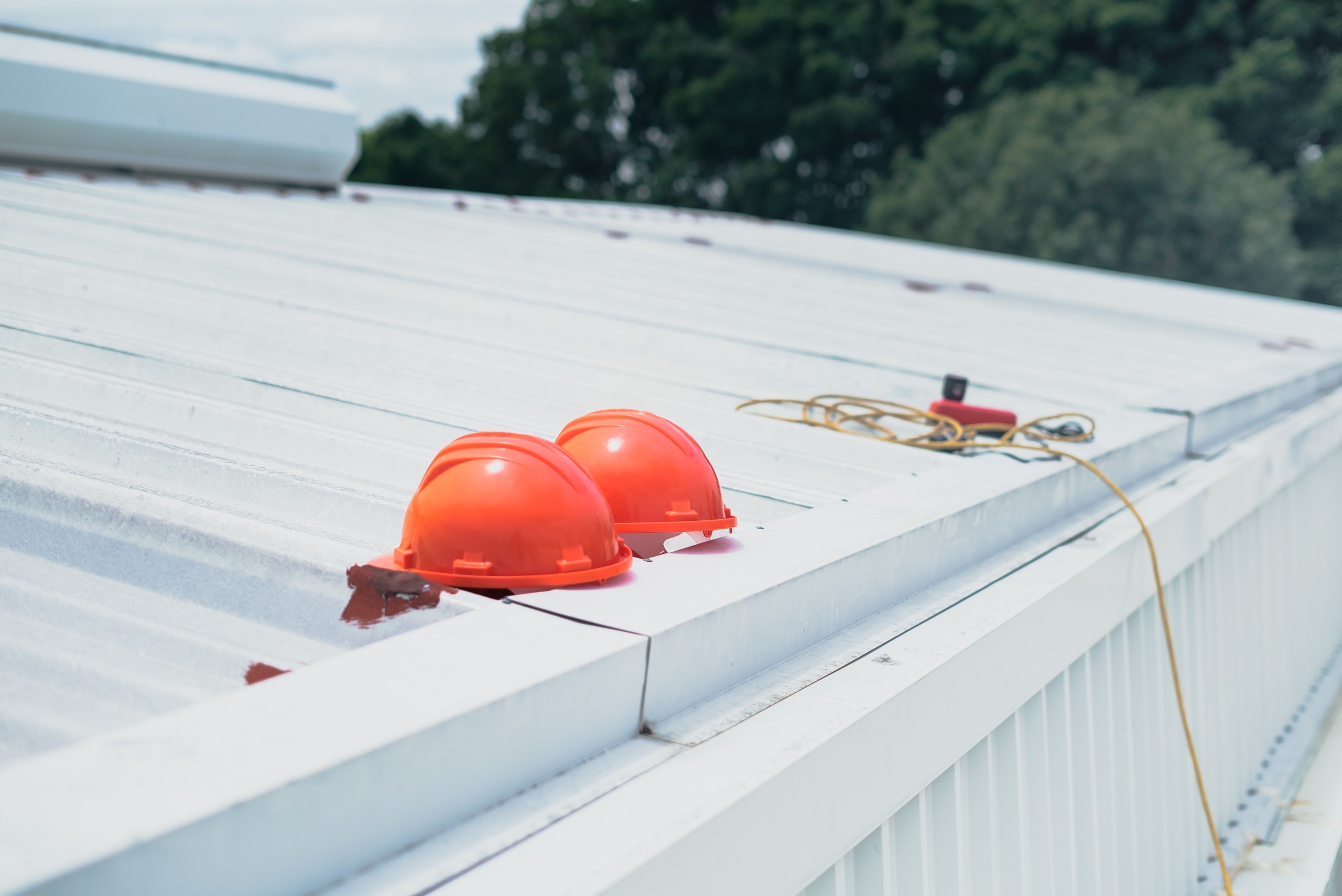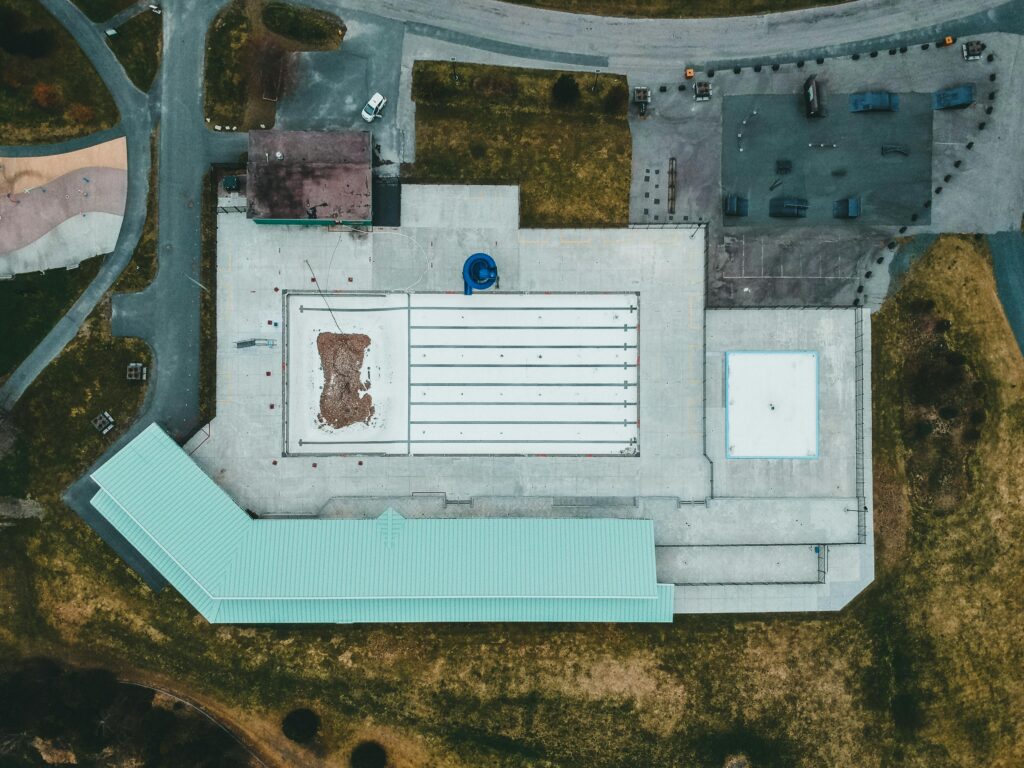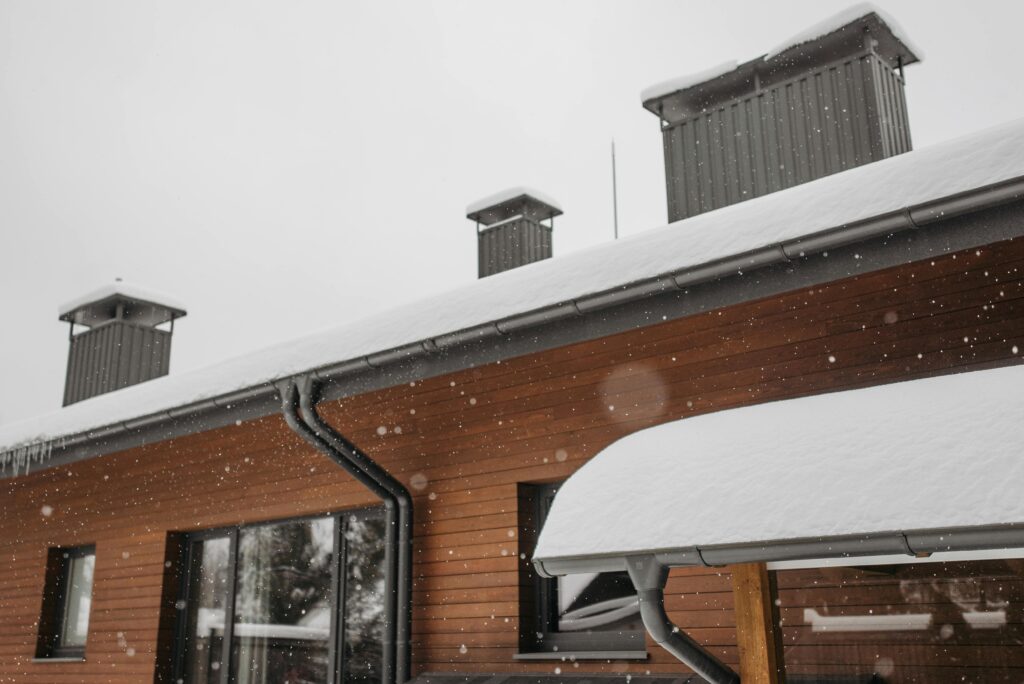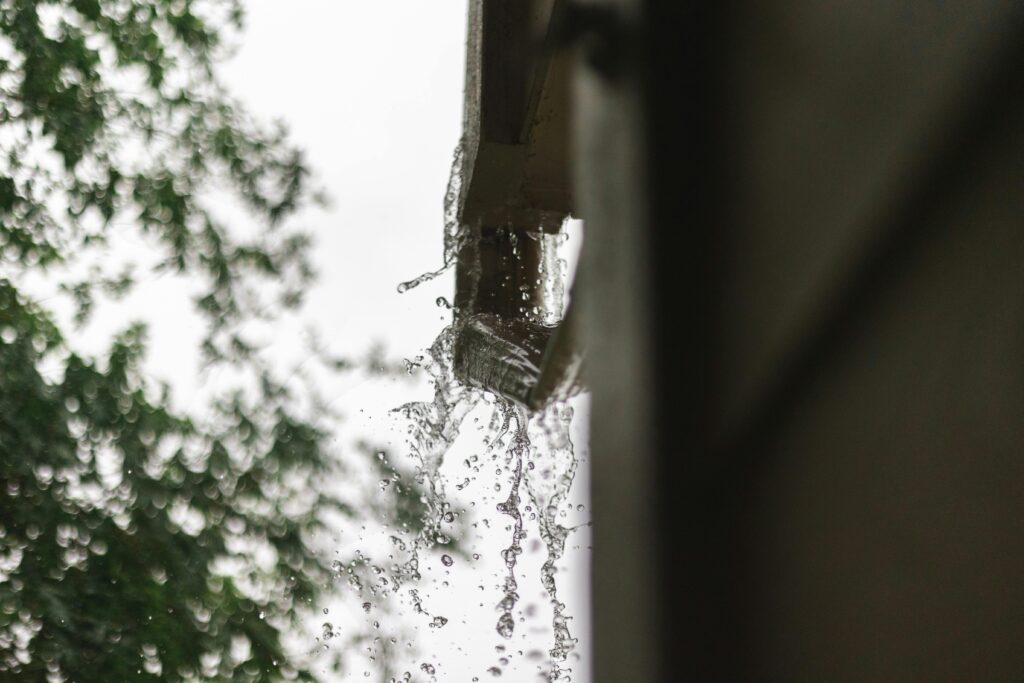Flat roofing systems work a bit differently than pitched roofs. Flat roofs typically have a low slope to facilitate water drainage. There are a few different drainage systems that can help remove water from your commercial building. Here are four types of drainage systems to consider for your flat roof and how they work to shed water and protect your property.
Flat Roof Interior Drainage System
In this system, drains are built into the roof with pipes beneath the membrane. The system depends on gravity to work, collecting water that travels through the pipes to downspouts or gutters.
Each drain must have a filter to prevent clogging from debris. Interior drainage systems can have many benefits for flat roofs. For example, drains can be placed in areas where water tends to accumulate most on the roof, maximizing drainage potential.
Another benefit of having an interior drainage system is that the pipes that carry water are protected from damage, especially freezing and cracking, since they are located below the roofing system.
Commercial-grade Gutters
A flat roof can use a commercial-grade gutter system to drain water. However, the roof must have a gradual slope to divert water to the gutters, where downspouts will carry water away from the building.
Commercial-grade gutters tend to function better than scuppers for areas that receive a significant amount of rain. However, they require more maintenance than an interior drainage system. Using gutters in combination with performing biannual maintenance will help improve the function of a commercial-grade gutter system.
Scuppers and Downspouts
Although they can’t handle as much rainfall as gutters, scuppers can be a good choice for commercial roofs. They are an affordable way to collect and divert water away from a commercial building with a flat roof.
Scuppers collect water on the low side of the roof and shoot it away from the building. In some cases, scuppers are used with downspouts to properly channel water away from a building’s foundation, sidewalks, and landscaping.
Besides their cost, another benefit of scuppers is that they are less likely to get clogged with debris than gutters. They are also inconspicuous enough to not dramatically impact the curb appeal of a commercial property. However, scuppers are generally not the right choice for very flat roofs or areas that see heavy rain and snow.
Flat Roof Drainage Panels
Green roofing systems need water to remain on the roof for longer than traditional flat roofs. As such, they require a particular drainage system that uses a combination of a root barrier membrane, plastic drainage panels, and an additional membrane to filter out soil and debris from plants.
Water retention is important for live roofs, which is why plastic drainage panels are necessary. These panels store some water while allowing excess water to drain away. Using an interior drainage system in combination with drainage panels ensures plants are fed. This also allows most of the water to drain off the roof.
Which Drainage System is Best for Your Flat Roof?
Proper drainage for a flat roof requires professional design and installation to maximize the performance, durability, and lifespan of your roofing system while minimizing damage and maintenance. Which drainage system is the best for your roof? Contact CDS Roofing for a consultation today to learn more about the best flat roof drainage systems for your commercial roofing system.



